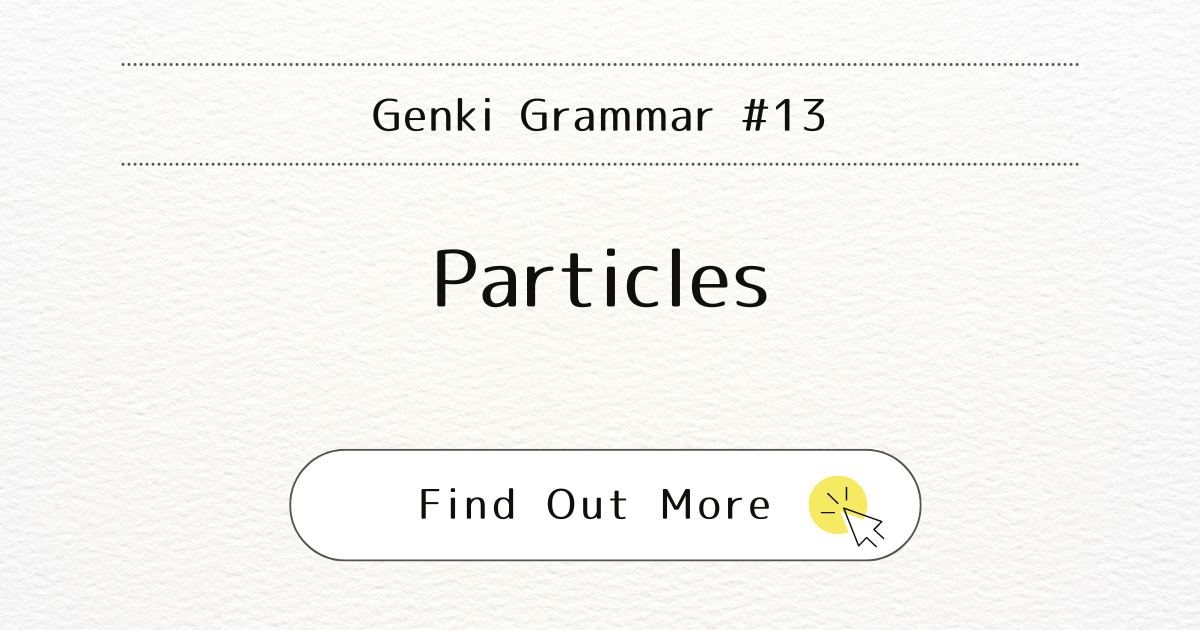
Introduction
Understanding particles is crucial for mastering Japanese sentences. Particles indicate the relationship between nouns and verbs. In this post, we’ll focus on four essential particles: を (o), で (de), に (ni), and へ (e).
What It Means
を (o): Indicates the direct object of a verb.

で (de): Indicates the place where an action occurs.

に (ni): Indicates the goal of movement and the time an event takes place.

へ (e): Indicates the goal of movement, similar to に but used with specific verbs.

When You Use It
Use these particles to clarify the roles of nouns in sentences:
- を for the direct object (the thing the verb is directly affecting). For example, in the sentence “I drink coffee,” the coffee is what is being drunk, so it’s the direct object.
- で for where the action happens.
- に for where someone is going or when something happens.
- へ for where someone is going.
Examples
Using を (Direct object)
- コーヒーを飲みます。
(Koohii o nomimasu.)
I drink coffee. - 音楽を聞きます。
(Ongaku o kikimasu.)
I listen to music. - 映画を見ます。
(Eiga o mimasu.)
I watch a movie.
Using で (Place of action)
- 図書館で本を読みます。
(Toshokan de hon o yomimasu.)
I will read books in the library. - レストランで昼ご飯を食べます。
(Resutoran de hirugohan o tabemasu.)
I will eat lunch at a restaurant.
Using に (Goal of movement and time)
- Goal of movement:
- あした学校に行きません。
(Ashita gakkou ni ikimasen.)
I will not go to school tomorrow.
- あした学校に行きません。
- Time:
- 日曜日に東京に行きます。
(Nichiyoubi ni Toukyou ni ikimasu.)
I will go to Tokyo on Sunday. - 12時に寝ます。
(Juuniji ni nemasu.)
I will go to bed at twelve. - 12時ごろに寝ます。
(Juuniji goro ni nemasu.)
I will go to bed at around twelve.
- 日曜日に東京に行きます。
Using へ (Goal of movement)
- あした学校へ行きません。
(Ashita gakkou e ikimasen.)
I will not go to school tomorrow. - うちへ帰ります。
(Uchi e kaerimasu.)
I will return home.
Note
- Dropping Particles: In spoken Japanese, particles are often dropped.
- に vs. へ: Both can indicate the direction of movement, but へ cannot be used for time expressions.
Conclusion
Mastering particles を, で, に, and へ will help you form clear and accurate sentences in Japanese.



